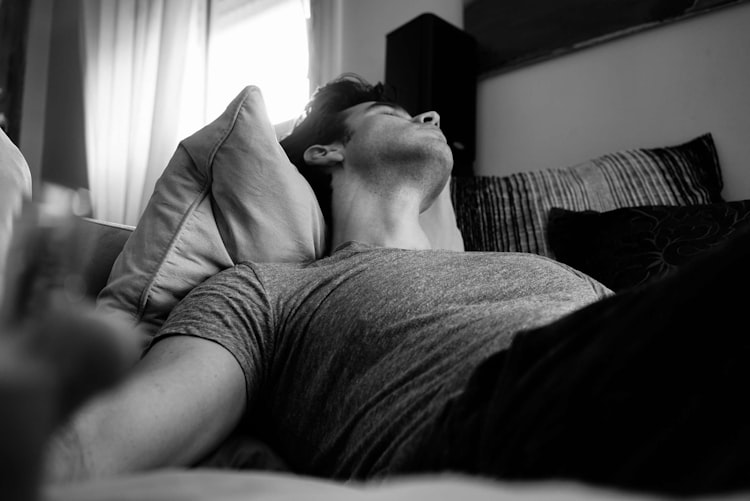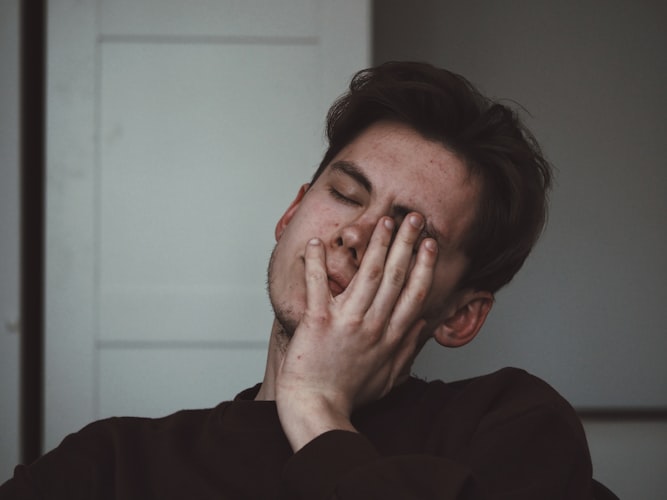Patients who have been diagnosed with sleep apnea will typically be prescribed a CPAP machine to help them manage their symptoms. Adjusting to a CPAP device can take some getting used to, but over time, the vast majority of patients find that this therapy can greatly alleviate their symptoms.
If you’re still new to CPAP therapy, however, you may be uncertain as to whether your machine is actually making a difference for your sleep habits. Thankfully, there are many factors you can use to determine whether or not your treatment is working.
Even more importantly, there are things you can do to increase your chances for successful CPAP treatment. Here’s how you can have confidence that you’re getting great results from your sleep apnea therapy.
Signs of Sleep Apnea
Sleep apnea is a relatively common condition in which a person temporarily stops breathing while sleeping. This is typically caused by the throat muscles relaxing, which collapses the windpipe. These events can occur several times during the night, often causing the person to wake up gasping for breath. Snoring is also common among individuals with sleep apnea, which can make it hard for their partner to sleep.
Because many people don’t remember the times they briefly woke up during the middle of the night, they may not realize they have sleep apnea unless their partner identifies their symptoms.
However, a person who suffers from sleep apnea will typically feel fatigued during the day, even after getting a full eight hours of rest. This can make it hard to stay focused at work, and may result in you feeling like you need to take long naps to get through the day. Some people also experience headaches in the morning as a result of their condition.
Left unchecked, potential long-term consequences of sleep apnea include high blood pressure, diabetes, and depression. A study conducted by the American Academy of Sleep Medicine noted that sleep apnea can actually reduce the concentration of gray matter in parts of the brain, contributing to emotional problems and poor memory. Sleep apnea can even increase one’s risk for heart attack or stroke.
Needless to say, there is more at stake than simply not sleeping well. This makes getting an appropriate CPAP prescription — and using your equipment properly — an absolute must.
How Can You Tell Your Treatment Is Working?

With some medical conditions, you may be required to take pills every day, yet not see any noticeable changes in your health. The good news is that it is relatively easy to identify when your CPAP treatment is working.
Successful CPAP therapy will result in the elimination of the symptoms you or your partner had noticed previously. Because CPAP treatment prevents sleep apnea incidents, you will be able to sleep soundly throughout the night. As a result, you will feel better rested in the morning and have high energy levels throughout the day.
Feeling well rested will make it easier to stay focused while driving or working, and will also help eliminate the morning headaches that are common among sleep apnea sufferers. Your partner will also benefit, as successful CPAP therapy reduces snoring and ensures that you won’t wake up gasping for breath.
The end result is that both you and your partner will enjoy continuous sleep.
Of course, even if you are feeling better, it can boost your confidence to have third-party validation that your treatment is working properly. With modern CPAP machines, this isn’t a problem.
Devices like the ResMed AirSense S10 CPAP Machine automatically generate “sleep reports” that help you track your therapy. These reports are primarily meant to show your AHI (apnea hypopnea index) measurement, which indicates how many sleep apnea events you experienced per hour while you were sleeping
With successful CPAP therapy, you should see the AHI readings significantly decrease over time. While people with severe obstructive sleep apnea can experience over 30 events per hour, successful treatment should help you experience 5 or fewer — and ideally, zero events.
These reports also provide a breakdown of how many hours you used the device, as well as whether you took off your CPAP mask during the night to help track compliance with your treatment. Many of these tracking tools also monitor mask seal and humidification levels to help you further optimize your treatment.
Signs CPAP Therapy Isn’t Working
Just like it’s fairly easy to tell when CPAP therapy is working, it’s also not very hard to figure out when treatment isn’t delivering the desired results.
Most notably, you will still experience symptoms of sleep apnea. Feelings of fatigue won’t go away, causing you to feel lethargic during the day. Snoring and incidents of waking up during the night will continue as well, which will disturb your partner’s sleep.
It is important to realize that even if your CPAP therapy is initially successful, other lifestyle changes could cause your prescription needs to change. Aging and weight gain are among the most common factors that may require that you switch to a higher air pressure to better prevent sleep apnea episodes.
Fortunately, the “sleep report” tools found in most modern CPAP devices frequently come with built-in wireless communication systems that allow data to be transferred to your doctor. This way, your doctor can easily (and quickly) identify when treatment isn’t proceeding like it should. You can then meet with your doctor to determine what needs to be done to improve treatment outcomes.
If CPAP therapy doesn’t seem to be delivering the desired results, this doesn’t mean you should give up on it altogether. In some situations, the problem could be easily remedied by increasing your prescribed air pressure. Others may need to replace their mask or equipment. Consult with your doctor to determine what needs to be done to give you a greater likelihood of success.
How to Increase Your Chances For Successful Treatment

While CPAP therapy is highly effective for many patients, there are a few things you can do on your own to ensure successful therapy. This is especially true of those who are not yet experiencing the reduction in symptoms they desire. These tips will make it easier to remain compliant with your therapy plan so you can get a good night’s sleep, every night.
- Check For Mask Leaks: An improper mask seal will keep you from getting the air pressure you need to keep your airways open during the night. The leaking air can also dry out and irritate your skin. Because of this, it is essential that you choose the right size mask for your face shape. Consider your breathing and sleeping habits to determine whether you will be best served by a full face mask, a nasal mask, or nasal pillows. Before going to bed, tighten the mask so that it forms an airtight yet comfortable seal against your face. Many CPAP and BiPAP devices also include settings that allow users to check for leaks. These tests can be completed in less than a minute, and are a great asset in identifying leaks that you might not have noticed on your own.
- Use a Humidifier: Many new CPAP patients have trouble adapting to their treatment because the cool, dry air feels uncomfortable and contributes to a sore throat. This is the type of problem that could cause you to take off your mask in your sleep, disrupting your therapy. Using a humidifier will prevent this problem by ensuring that your CPAP machine provides warm, moist air. A properly working humidifier that uses a water chamber will typically need to be refilled every few days. If the air starts feeling uncomfortably dry even while using a humidifier, the humidifier may need to be replaced.
- Consider Switching to a BiPAP Device: Some individuals — particularly those with COPD and other respiratory conditions — need extra support in managing their sleep apnea. Others may find that the continuous air pressure delivery from a standard CPAP device is too uncomfortable, and that they cannot fall asleep when using the device. If this is the case, switching to a BiPAP machine may be the better option. BiPAP machines deliver two air pressures, with air pressure being reduced during exhalation. This makes it easier for patients to breathe out, and for some patients, may be the only change that is needed to ensure greater treatment compliance.
- Follow Equipment Replacement Guidelines: CPAP equipment doesn’t last forever. To prevent air leaks and other problems, you should always follow the equipment replacement guidelines as provided by your manufacturer. Generally speaking, masks and tubing should be replaced every three months. Mask cushions should be replaced monthly or every two weeks, depending on the type of mask you use. The CPAP machine itself should have a lifespan of approximately five years. Following these guidelines will ensure that you receive the highest quality therapy, and that even seemingly minor equipment issues won’t reduce the effectiveness of your treatment.
- Try to Sleep on Your Side: Resting on your side can make a big difference for sleep quality among sleep apnea patients. In fact, a study from the National Institutes of Health found that patients with obstructive sleep apnea who slept on their sides had half as many OSA incidents as those who sleep on their backs. Sleeping on your side can also reduce snoring and alleviate back and neck pain. As a result, this position can also make your CPAP therapy more effective. Be mindful of your sleep habits, however — those who toss and turn or roll around in their sleep can easily knock nasal pillows loose, disrupting their treatment.
- Adjust the Thermostat: Interestingly, the right room temperature can also make it easier to get positive outcomes from your CPAP therapy. A Swedish study found that sleep apnea patients were able to enjoy more “deep sleep” when a room was kept at 60 degrees Fahrenheit, rather than 75 degrees Fahrenheit. However, the study also found that sleep apnea episodes increased at colder temperatures. By lowering the thermostat and using your CPAP device as prescribed, you can get the benefits of sleeping in colder temperatures without the negative consequences. If you don’t want to keep the air conditioner running all night, you can cool off your body before bedtime by taking a warm shower, drinking water, and avoiding alcohol consumption before bedtime. You can also keep the room cool by turning on the ceiling fan and using a table lamp rather than overhead lighting.
Parting Thoughts
Successful sleep apnea therapy starts with getting the right equipment — but for many, a lack of adequate insurance coverage or the cost of devices can make it difficult to get the treatment they need.
Here at No Insurance Medical Supplies, our aim is to make it easier to avoid the CPAP equipment you need to manage your condition and get a good night’s sleep. Whether you’re looking for a CPAP or BiPAP bundle or replacement masks, we offer a wide range of products from top brands so you can find what you need.
Perhaps even more importantly, we make it easier to afford this important equipment, even if you don’t have insurance coverage. With significant discounts off MSRP, free shipping on orders over $89, and available financing to help you manage your cash flow, we ensure that you can afford your equipment.
With the right equipment, you will ultimately be able to improve your sleep quality and avoid the negative health consequences associated with sleep apnea. Don’t wait to start enjoying better sleep. Place your order today!


